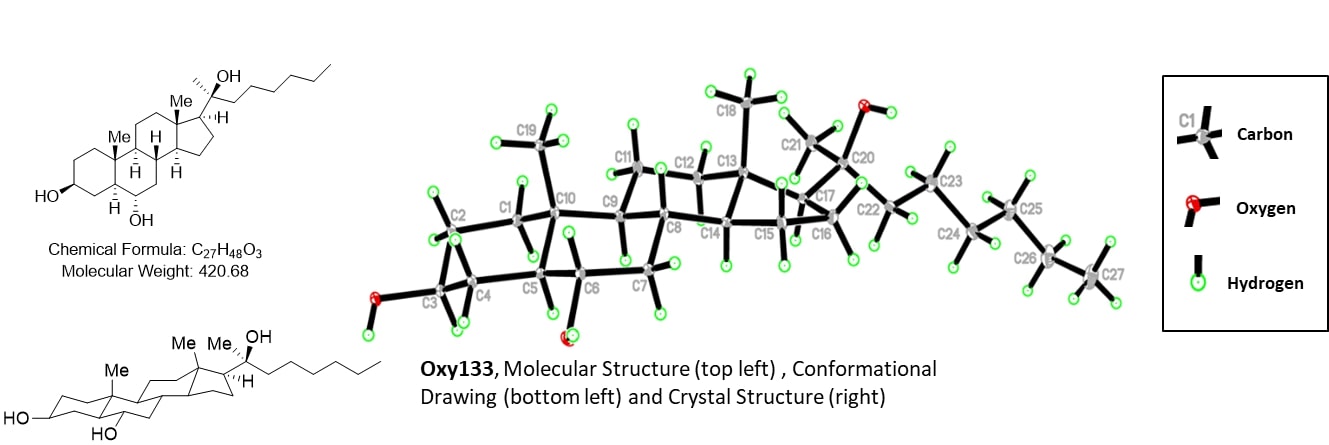Oxy133
Drug Candidate
Oxy133 is a small molecule with a molecular weight of 420.68 g/mol.
Preclinical Pharmacology
Oxy133 is a semi-synthetic oxysterol with robust osteoinductive properties. Oxy133 is derived from a naturally occurring oxysterol, 20(S)-hydroxycholesterol, which is weakly osteogenic. Oxy133 can be prepared in a three-step chemical synthesis, using naturally occurring pregnenolone as a starting material.
Mechanism of Action
Oxy133 was shown to induce the osteogenic and inhibit the adipogenic differentiation of bone progenitor cells, multipotent stem cells found in bone marrow (mesenchymal stem cells), through allosteric activation of Hedgehog signaling. Hedgehog signaling is a developmental signaling pathway, active mostly in undifferentiated cells, such as mesenchymal stem cells, that is tightly controlled in time, location (in the body), and by cellular context. Hedgehog signaling is highly activated during embryonic development throughout the prenatal period. In the adult organism, by contrast, Hedgehog signaling lies mostly dormant, except for brief bursts of localized signaling during maintenance and regeneration of tissues. A sustained (re)activation of Hedgehog signaling in adults could be potentially harmful and may cause tissue damage and even cancer. Mechanistically speaking, allosteric activation of a signaling pathway is a safe alternative to so-called orthosteric activation because it precludes overstimulation of the pathway. In the case of Hedgehog signaling, orthosteric activation of the pathway by Smoothened agonists, such as SAG, can cause sustained systemic activation of the pathway. By contrast, allosteric activation of Hedgehog signaling by oxysterols, including Oxy133, only amplifies preexisting Hedgehog signaling occurring in the bone tissue.
Safety
No adverse side effects, such as seroma, ectopic bone formation, or organ toxicity were noted during multiple rat and rabbit spine fusion efficacy studies. Oxy133 did not inhibit hERG ion channel function, hence deemed safe to cardiac system, and tested negative in the Ames mutagenicity assay, suggesting lack of genetic toxic effects.
Efficacy
The efficacy of Oxy133 as an osteogenic agent has been tested in several different pre-clinical experimental models, including rat and rabbit models of spine fusion and healing of cranial and maxillofacial bone defects.

